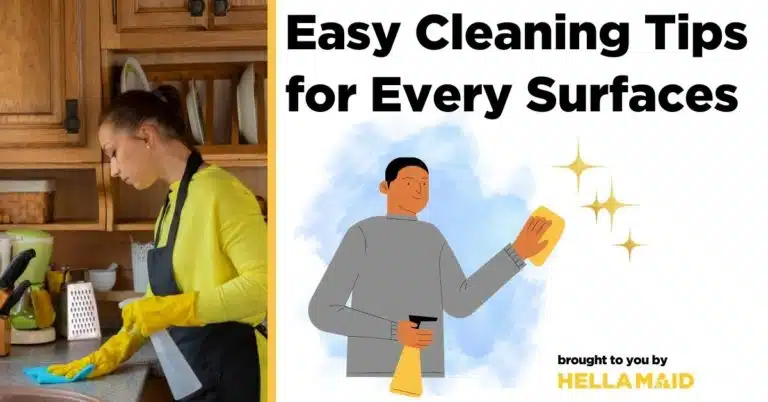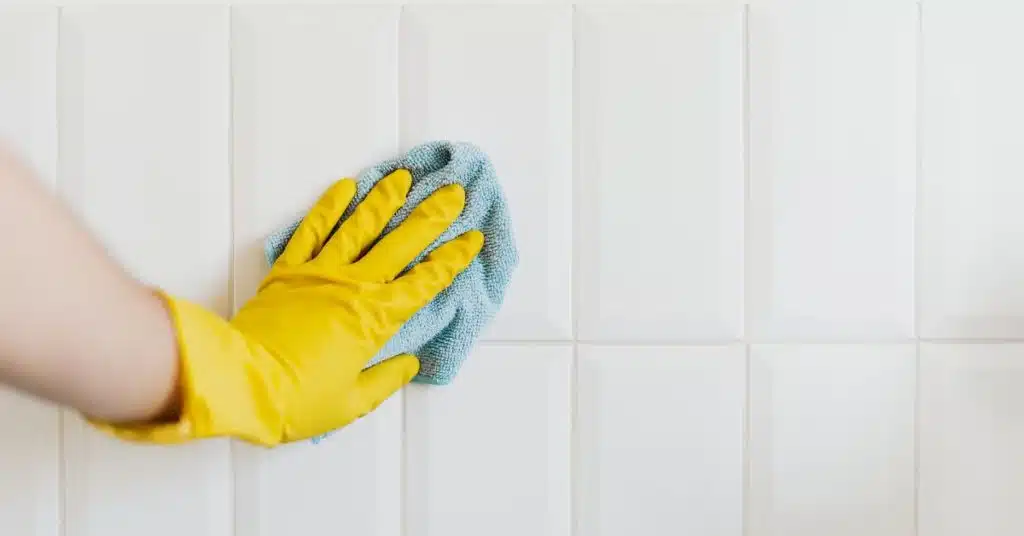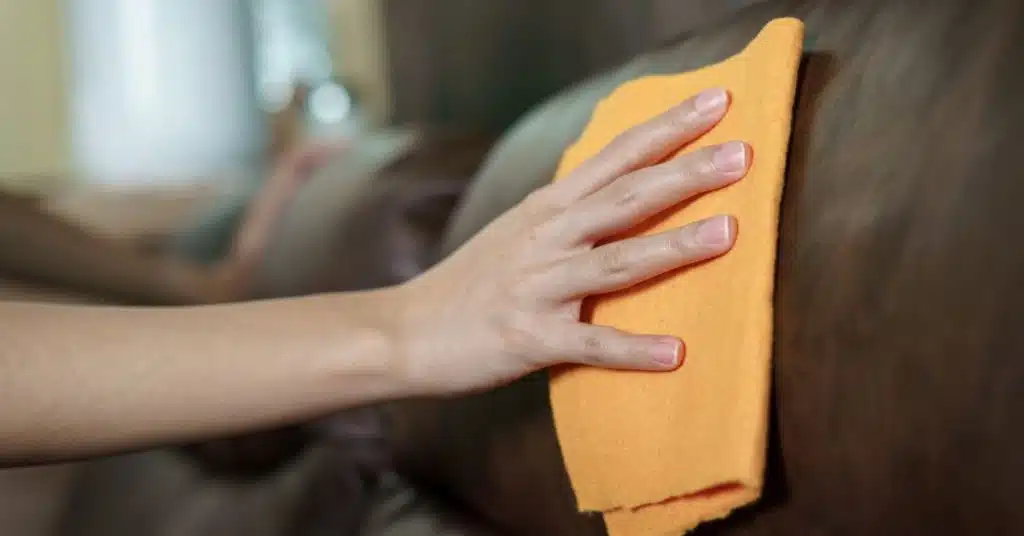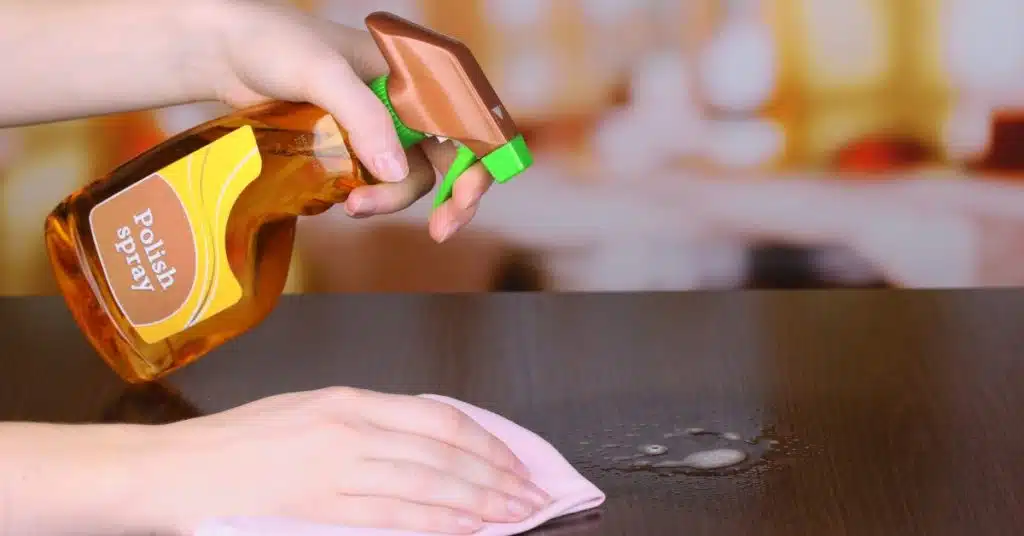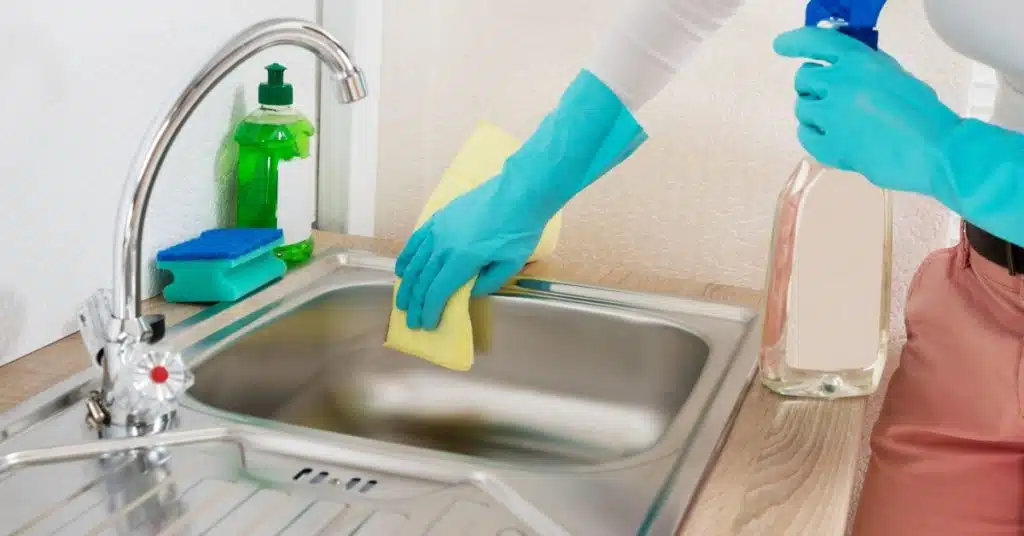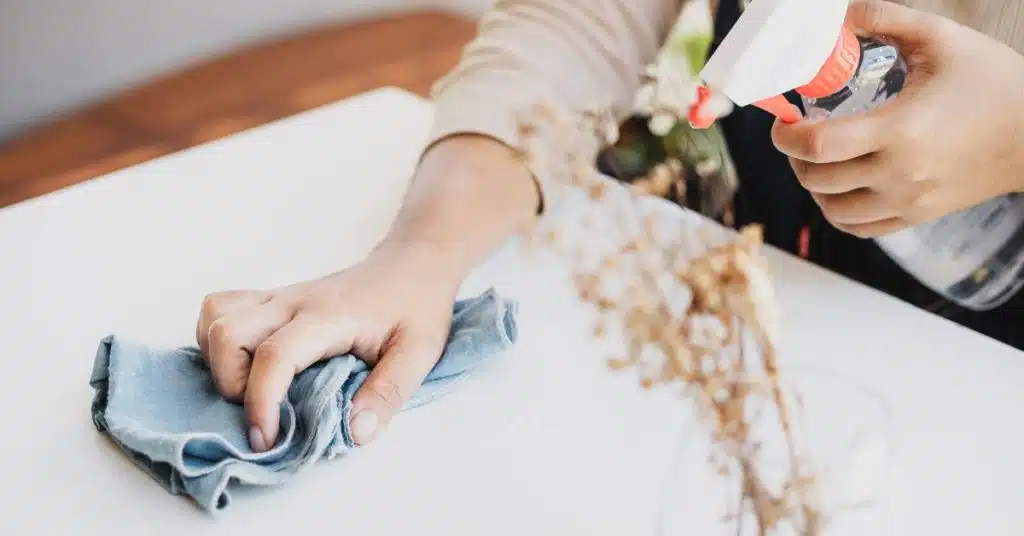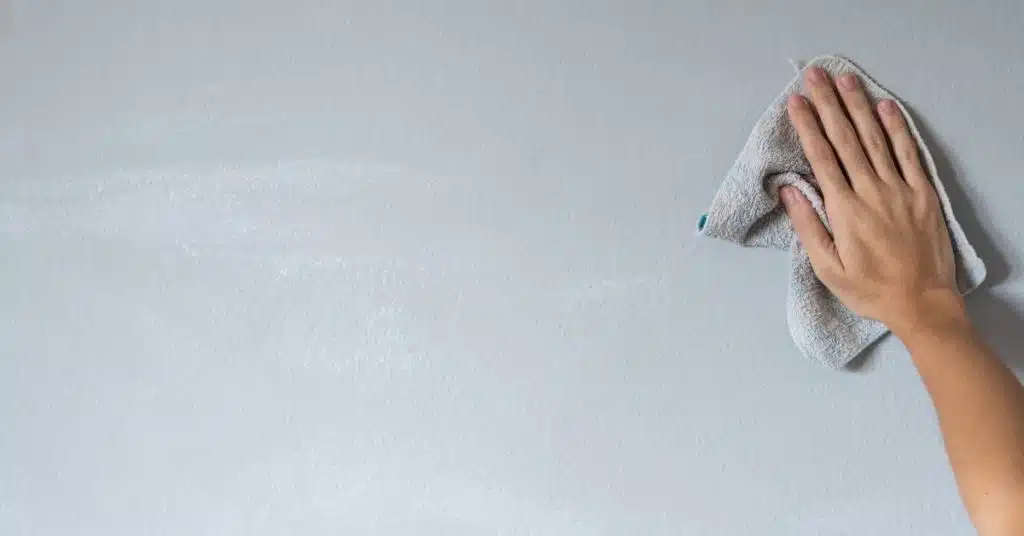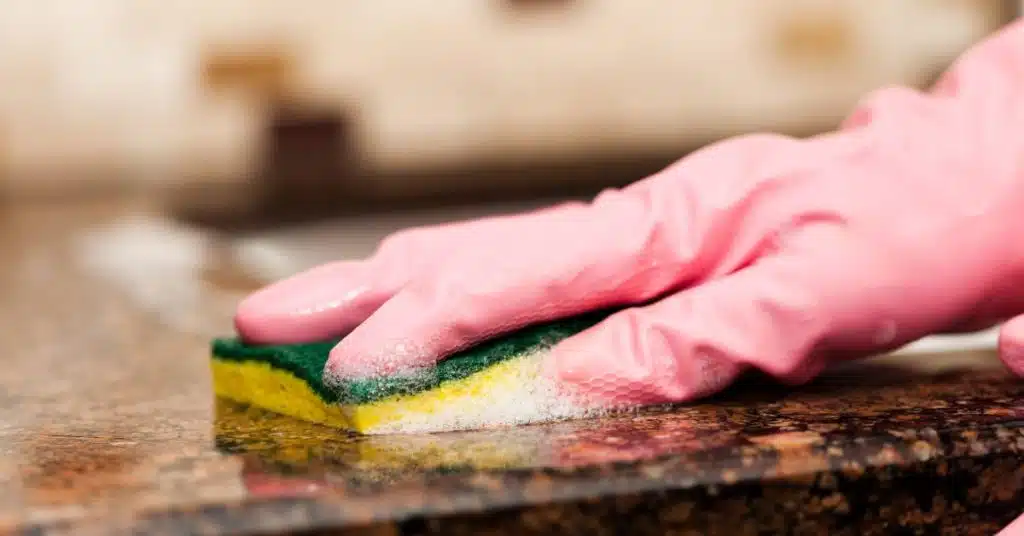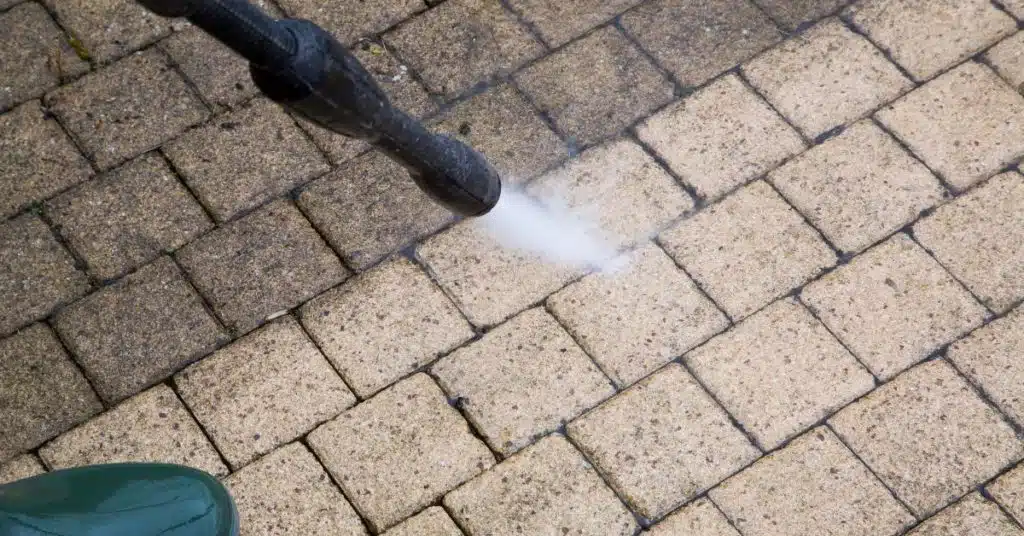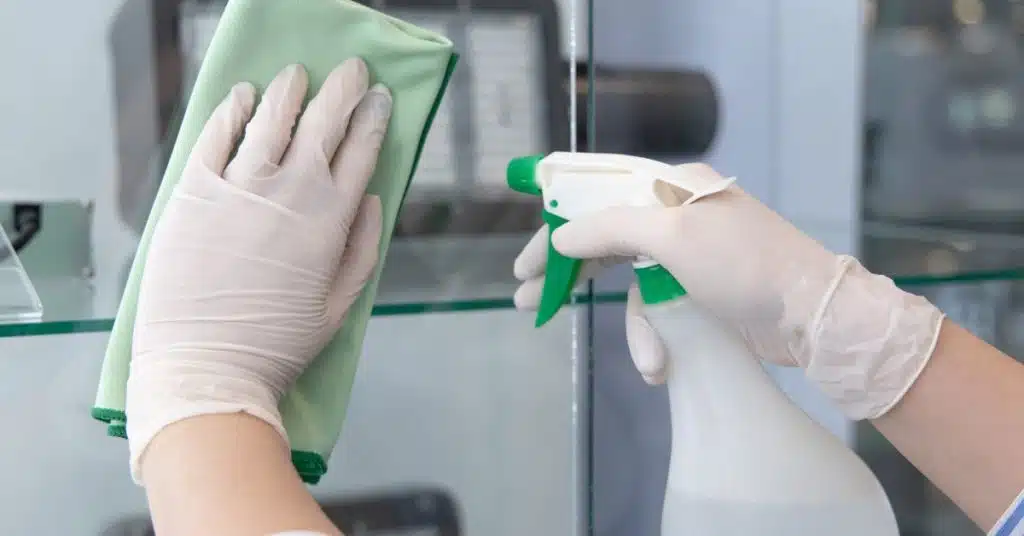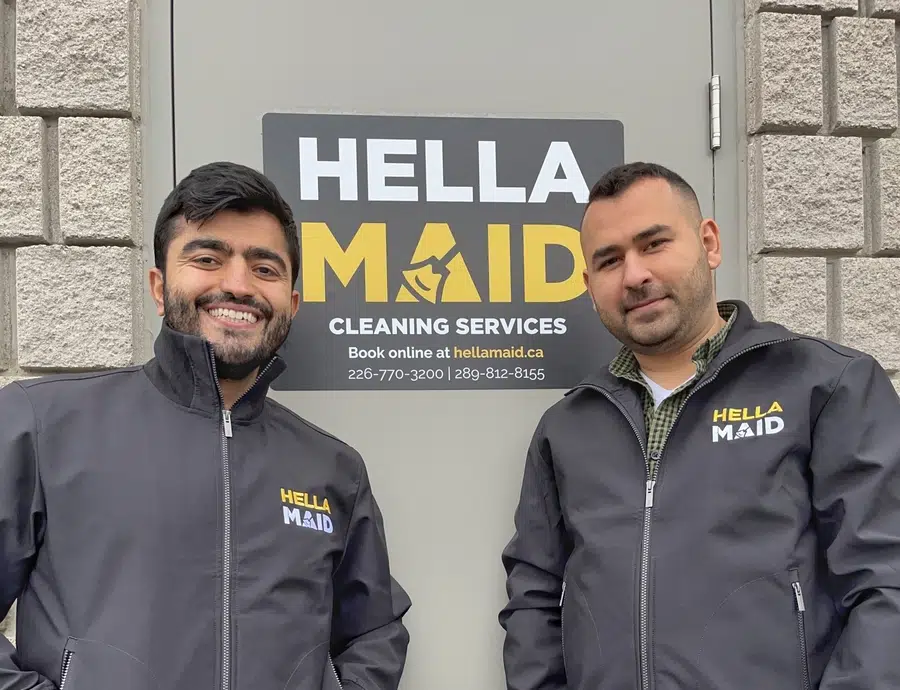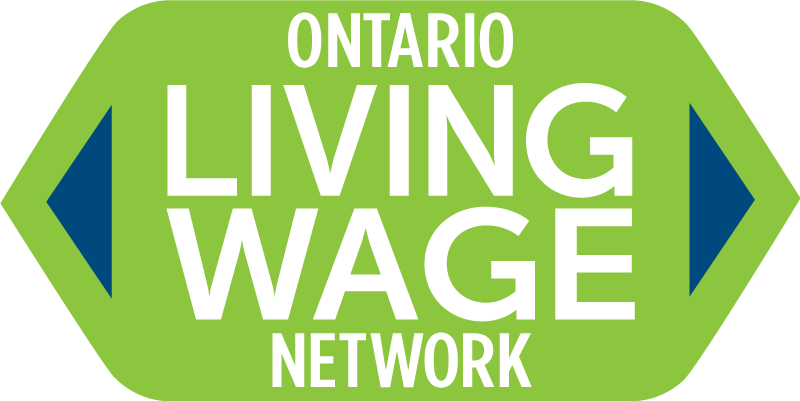Knowing how to clean and maintain different types of surfaces is crucial for preserving the appearance and longevity of your home or office. Whether it is made of wood, marble, granite, or laminate, each type of surface requires specific care and attention. This article will provide guidelines for cleaning and maintaining the different types of surfaces found in most homes and any property.
Different Types of Surfaces and How to Clean Them
Hard surfaces
These include materials such as stone, tile, concrete, and glass. They are often used for countertops, flooring, and walls. Here are some guidelines for cleaning hard surfaces:
- Stone: Clean stone surfaces with a damp cloth and a mild soap solution. Avoid using acidic or abrasive cleaners, as they can damage the surface. For deeper cleaning, you can use a commercial stone cleaner.
- Tile: Clean tile surfaces with a damp cloth and a mild soap solution. For grout, you can use a grout cleaner and a brush to scrub away dirt and stains. Avoid using abrasive cleaners or scrubbing too hard, as this can damage the tile or grout.
- Glass: Clean glass surfaces with a microfiber cloth and a glass cleaner. Avoid using paper towels or other abrasive materials, as they can scratch the surface.
Soft surfaces
These include materials such as carpet, fabric, and leather. They are often used for furniture and upholstery. Here are some guidelines for cleaning soft surfaces:
- Carpet: Vacuum the carpet regularly to remove dirt and debris. For deeper cleaning, you can rent a steam cleaner or hire a professional carpet cleaning service. Spot clean spills and stains as soon as they occur with a mild soap solution and a clean cloth.
- Fabric: Clean fabric surfaces with a mild soap solution and a clean cloth. For deeper cleaning, you can use a commercial fabric cleaner or hire a professional upholstery cleaning service. Avoid using harsh chemicals or abrasive scrubbing, as this can damage the fabric.
- Leather: Clean leather surfaces with a damp cloth and a mild soap solution. For deeper cleaning, you can use a commercial leather cleaner. Avoid using harsh chemicals or abrasive scrubbing, as this can damage the leather.
Wood surfaces
These include materials such as hardwood flooring, cabinetry, and furniture. Here are some guidelines for cleaning wood surfaces:
- Hardwood Flooring: Sweep or vacuum hardwood flooring regularly to remove dirt and debris. Clean the surface with a damp cloth and a mild soap solution. Avoid using excessive water or abrasive cleaners, as they can damage the surface.
- Cabinetry: Clean cabinetry with a damp cloth and a mild soap solution. For tougher stains, you can use a wood cleaner and a non-abrasive scrub brush. Avoid using abrasive cleaners or excessive water, as they can damage the surface.
- Furniture: Clean furniture with a damp cloth and a mild soap solution. For tougher stains, you can use a wood cleaner and a non-abrasive scrub brush. Avoid using excessive water, as this can damage the surface.
Metal surfaces
These include materials such as stainless steel, aluminum, and iron. They are often used for appliances, fixtures, and hardware. Here are some guidelines for cleaning metal surfaces:
- Aluminum: Clean aluminum surfaces with a damp cloth and a mild soap solution. For tougher stains, you can use a commercial aluminum cleaner. Avoid using abrasive cleaners or scrubbing too hard, as this can damage the surface.
- Stainless Steel: Clean stainless steel surfaces with a damp cloth and a mild soap solution. For tough stains, you can use a stainless steel cleaner and a non-abrasive scrub brush. Avoid using abrasive cleaners, as they can scratch the surface.
- Brass: Clean brass surfaces with a damp cloth and a mild soap solution. For tougher stains, you can use a commercial brass cleaner. Avoid using abrasive cleaners or scrubbing too hard, as this can damage the surface.
- Copper: Clean copper surfaces with a damp cloth and a mild soap solution. For tougher stains, you can use a commercial copper cleaner. Avoid using abrasive cleaners or scrubbing too hard, as this can damage the surface.
Plastic surfaces
These include materials such as PVC, polycarbonate, and polyethylene. They are often used for containers, toys, and packaging. Here are some guidelines for cleaning plastic surfaces:
- Polycarbonate: Clean polycarbonate surfaces with a damp cloth and a mild soap solution. For tougher stains, you can use a commercial plastic cleaner. Avoid using abrasive cleaners or scrubbing too hard, as this can scratch the surface.
- PVC: Clean PVC surfaces with a damp cloth and a mild soap solution. For tougher stains, you can use a commercial plastic cleaner. Avoid using abrasive cleaners or scrubbing too hard, as this can damage the surface.
- Acrylic: Clean acrylic surfaces with a damp cloth and a mild soap solution. For tougher stains, you can use a commercial plastic cleaner. Avoid using abrasive cleaners or scrubbing too hard, as this can scratch the surface.
Painted surfaces
These include walls, ceilings, and furniture that have been painted with a decorative finish. Here are some guidelines for cleaning painted surfaces:
- Latex Paint: Clean latex paint surfaces with a damp cloth and a mild soap solution. For tougher stains, you can use a commercial all-purpose cleaner. Avoid using abrasive cleaners or scrubbing too hard, as this can damage the surface.
- Oil Paint: Same as latex paint, clean oil paint surfaces with a damp cloth and a mild soap solution. For tougher stains, you can use a commercial all-purpose cleaner. Avoid using abrasive cleaners or scrubbing too hard, as this can damage the surface.
- Wallpaper: Clean the wallpaper with a damp cloth and a mild soap solution. Avoid using excessive water, as this can damage the surface. For tougher stains, you can use a commercial wallpaper cleaner.
Natural stone surfaces
These include materials such as marble, granite, and quartz. They are often used for countertops and flooring. Here are some guidelines for cleaning natural stone surfaces:
- Granite: Clean granite surfaces with a damp cloth and a mild soap solution. For tougher stains, you can use a commercial granite cleaner. Avoid using acidic cleaners, as they can damage the surface.
- Marble: Clean marble surfaces with a damp cloth and a mild soap solution. For tougher stains, you can use a commercial marble cleaner. Avoid using acidic cleaners, as they can damage the surface.
- Limestone: Clean limestone surfaces with a damp cloth and a mild soap solution. For tougher stains, you can use a commercial limestone cleaner. Avoid using acidic cleaners, as they can damage the surface.
- Sandstone: Clean sandstone surfaces with a damp cloth and a mild soap solution. For tougher stains, you can use a commercial sandstone cleaner. Avoid using acidic cleaners, as they can damage the surface.
Textured surfaces
These include materials that have a rough or irregular surface, such as stucco, brick, and textured wallpaper. Here are some guidelines for cleaning textured surfaces:
- Concrete: Clean concrete surfaces with a pressure washer and a mild soap solution. For tougher stains, you can use a commercial concrete cleaner. Avoid using abrasive cleaners or scrubbing too hard, as this can damage the surface.
- Brick: Clean brick surfaces with a damp cloth and a mild soap solution. For tougher stains, you can use a commercial brick cleaner. Avoid using abrasive cleaners or scrubbing too hard, as this can damage the surface.
- Stucco: Clean stucco surfaces with a damp cloth and a mild soap solution. For tougher stains, you can use a commercial stucco cleaner. Avoid using abrasive cleaners or scrubbing too hard, as this can damage the surface.
Mirrored surfaces
These include glass or plastic surfaces that have been treated to provide a reflective finish. Here are some guidelines for cleaning different types of mirrored surfaces:
- Regular Mirrored Glass: Clean regular mirrored glass surfaces with a commercial glass cleaner, such as Windex, or a mild soap solution. Avoid using abrasive cleaners or scrubbing too hard, as this can scratch the surface.
- Antique Mirrored Glass: Antique mirrored glass is more delicate than regular mirrored glass, so it’s important to be gentle when cleaning it. Clean antique mirrored glass with a soft, damp cloth and a mild soap solution. Avoid using commercial glass cleaners, as they can damage the surface.
- Acrylic Mirrored Glass: Clean acrylic mirrored glass with a soft, damp cloth and a mild soap solution. Avoid using commercial glass cleaners, as they can damage the surface.
- Beveled Mirrored Glass: Same as acrylic type, clean beveled mirrored glass with a soft, damp cloth and a mild soap solution. Avoid using commercial glass cleaners, as they can damage the surface.
Things to take note before cleaning
- Material: Know what material the surface is made of, as this will determine the type of cleaner and cleaning method to use. For example, you wouldn’t clean a wood surface the same way you would clean a metal surface.
- Cleaner: Choose a cleaner that is appropriate for the type of surface you are cleaning. Some surfaces, such as natural stone or antique mirrored glass, may require special cleaners. Always check the manufacturer’s guidelines before using a cleaner.
- Scratch Resistance: Consider the scratch resistance of the surface. Some surfaces, such as stainless steel or glass, are more prone to scratches, so you should use a soft cloth and a gentle cleaning method.
- Surface Finish: Take note of the surface finish. For example, a glossy finish on a painted surface will require a different cleaning method than a matte finish.
- Water Spotting: Be mindful of water spotting, especially on surfaces like glass or stainless steel. Dry the surface thoroughly after cleaning to prevent water spots.
- Maintenance: Keep in mind that some surfaces, such as wood or natural stone, require regular maintenance to keep them looking their best.

